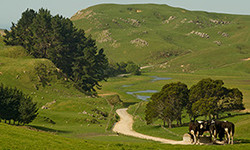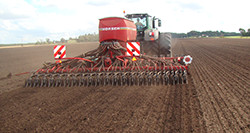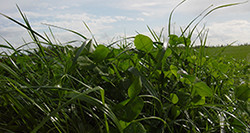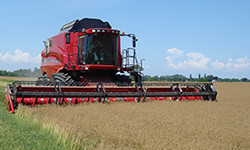Do good by sowing grass
Grasses and clovers are the earth’s most widespread species, and the most important feedstuff for livestock. But grass does much more than provide short-term forage leys; throughout the world there are millions of hectares of permanent grassland.
18/03/2016
Grass grows just about everywhere
 Grass is a wonder plant and flourishes just about everywhere, from coastal regions to high in the mountains near the limit of plant growth. And wherever grass grows, it does good. Near the coasts it helps to hold back erosion; in the mountains it provides pasture feeding and ski slopes. If people did not plant grasses to increase water penetration or slow down the movement of the water masses, flooding catastrophes would be much more frequent and damaging.
Grass is a wonder plant and flourishes just about everywhere, from coastal regions to high in the mountains near the limit of plant growth. And wherever grass grows, it does good. Near the coasts it helps to hold back erosion; in the mountains it provides pasture feeding and ski slopes. If people did not plant grasses to increase water penetration or slow down the movement of the water masses, flooding catastrophes would be much more frequent and damaging.
Flexible sowing times
 The season for sowing grass is wide. In Europe’s mildest regions, grass can be sown at almost any time of year. In areas with harder winters, the sowing season runs from spring to early summer. For the most part, there are plenty of options to sow new grass fields – to renew fields or catch up on low stocks – after the winter or summer droughts.
The season for sowing grass is wide. In Europe’s mildest regions, grass can be sown at almost any time of year. In areas with harder winters, the sowing season runs from spring to early summer. For the most part, there are plenty of options to sow new grass fields – to renew fields or catch up on low stocks – after the winter or summer droughts.
Speedy recovery
Most grasses and clovers continue to grow after they have been cut or grazed to the ground. As long as there is sufficient light and warmth, regrowth is immediate; it is independent of the time of year the grass was cut.
Grasses survive periods of bad weather – prolonged drought or cold winters with snow – by entering a kind of dormancy.
Species can be sociable
 Although you can grow grasses and clovers in pure stands, they grow better when you plant two or more well-chosen species in association. Association secures yields and persistency, and stabilises forage quality.
Although you can grow grasses and clovers in pure stands, they grow better when you plant two or more well-chosen species in association. Association secures yields and persistency, and stabilises forage quality.
By adding nitrogen-fixing clovers and alfalfa to your mixtures, you contribute even further.
Rotational benefits
A field of grass, especially one that is planted in association with legumes, boosts the growth of cash crops the following year. The grass improves soil structure and nitrogen release.
Very efficient carbon sequestration – as much as a forest
The versatility of grass (wide range of sowing periods, fast regrowth after cutting, etc.) makes it supremely efficient at carbon sequestration. Grass captures CO2 like a forest, yet with much more flexibility. But not for long: Once a field is ploughed it stops capturing or releasing carbon. Luckily the ratio of fields covered in grass to those under the plough is high. There are always more fields to capture CO2.
|
Carbon sequestration |
||
|---|---|---|
| Annual and perennial crops with bare soil |
Permanent grassland and forests |
High altitude pastures and wetlands |
| 45 t C/ha | 70 t C/ha | 90 t C/ha |
Average soil (0-30 cm) organic carbon stock rate (France)
Environmentally friendly
Grass is good for the planet in numerous ways – for everything from carbon sequestration to improving soil structure and limiting nitrogen leaching.
 When grass is grown for seed production, the seeds are only harvested once a year, yet the process does not require a high input of pesticides. When grass is grown for forage, the need of pesticides falls further – perhaps to zero – because there is no need to protect the stems and inflorescences, and our scientists are continually improving their disease tolerance.
When grass is grown for seed production, the seeds are only harvested once a year, yet the process does not require a high input of pesticides. When grass is grown for forage, the need of pesticides falls further – perhaps to zero – because there is no need to protect the stems and inflorescences, and our scientists are continually improving their disease tolerance.
Grass species also play an aesthetic role in our lives – on roadsides and in vineyards, on sport fields and as natural grass, for green roofs and beautiful cities, along tramways, in parks and on home lawns.
No other species is happy to be cut down, trampled on, or eaten; and still look appealing.
Click here to find the perfect ForageMax® mixture for your region, climate and purpose.
